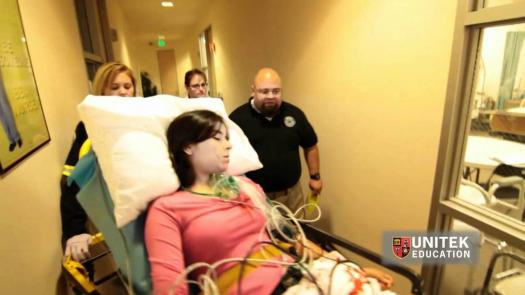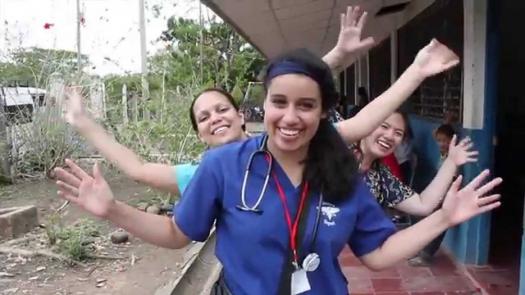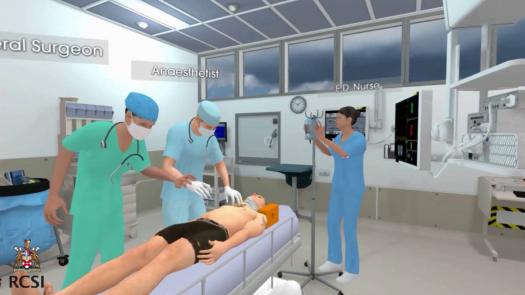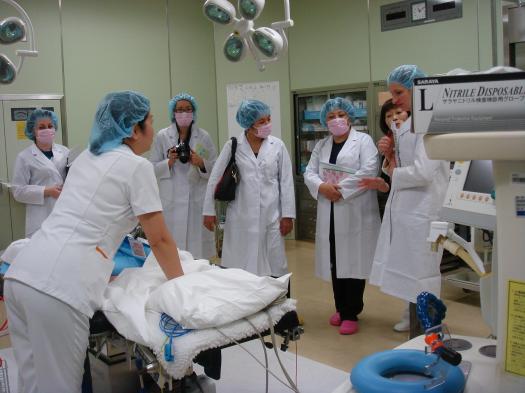Test Your Understanding Of Medical Training

Described as the training allowing you become a medical practitioner, it normally allows you to, one day become a physician. The programs or curriculum vary from one country to another, and today with the help of the internet, one can even get his/her training online. Now, whether you are curious or you think you know a thing or two about medical training take our quiz and see how well you do.
- 1.
Where is the initial training taken when it comes to medical training?
- A.
A the University
- B.
At a Medical School
- C.
At a science school
- D.
At a technical school
Correct Answer
B. At a Medical SchoolExplanation
Initial training for medical professionals is typically taken at a medical school. Medical schools provide comprehensive education and training in various medical disciplines, including anatomy, physiology, pharmacology, and clinical skills. These institutions are specifically designed to prepare students for a career in medicine, providing them with the necessary knowledge and skills to become competent healthcare professionals. Therefore, the correct answer is "At a Medical School."Rate this question:
-
- 2.
In which country are initial medical training is not considered as an undergraduate-entry training?
- A.
America
- B.
Finland
- C.
Asia
- D.
Mexico
Correct Answer
A. AmericaExplanation
In America, initial medical training is not considered as an undergraduate-entry training. This means that in America, students cannot directly enter medical school after completing their undergraduate degree. Instead, they must first complete a bachelor's degree and then apply to medical school. This is different from other countries where students can enter medical school directly after high school or after completing a specific pre-medical program.Rate this question:
-
- 3.
What do students learn while in Medical school?
- A.
Biochemistry, pharmacology, pathology.
- B.
Anatomy and pathology.
- C.
Anatomy, physiology, biochemistry, pharmacology, pathology.
- D.
Physiology, biochemistry, pharmacology
Correct Answer
C. Anatomy, physiology, biochemistry, pharmacology, pathology.Explanation
Students learn a variety of subjects while in Medical school, including anatomy, physiology, biochemistry, pharmacology, and pathology. These subjects are essential for understanding the human body, its functions, and the diseases that can affect it. By studying anatomy, students gain knowledge about the structure and organization of the body. Physiology teaches them about the normal functioning of the body's systems. Biochemistry helps students understand the chemical processes that occur within the body. Pharmacology focuses on the study of drugs and their effects on the body. Finally, pathology allows students to learn about the nature and causes of diseases.Rate this question:
-
- 4.
What is defined as clinical studies in medical training?
- A.
Internal medicine, pediatrics, obstetrics and gynecology, psychiatry, general practice and surgery.
- B.
Gynecology, psychiatry, general practice and surgery.
- C.
Pediatrics, obstetrics and gynecology, psychiatry.
- D.
Internal medicine and pediatrics.
Correct Answer
A. Internal medicine, pediatrics, obstetrics and gynecology, psychiatry, general practice and surgery.Explanation
Clinical studies in medical training refer to the practice and application of medical knowledge and skills in a real-life setting, under the supervision of experienced physicians. This includes various specialties such as internal medicine, pediatrics, obstetrics and gynecology, psychiatry, general practice, and surgery. These clinical studies allow medical students to gain hands-on experience, develop clinical reasoning abilities, and learn how to diagnose and treat patients in different medical fields.Rate this question:
-
- 5.
What type of training normally comes after entry level training in medicine?
- A.
Comes a period of supervised training.
- B.
Medical Licensing
- C.
Practical applications.
- D.
Studies in Medicine and surgery.
Correct Answer
A. Comes a period of supervised training.Explanation
After entry level training in medicine, the next step is typically a period of supervised training. This is when medical professionals gain practical experience under the guidance and supervision of experienced doctors. This supervised training allows them to apply the knowledge and skills they have learned in a real-world setting, further developing their clinical abilities. It is an essential stage in their medical education and prepares them for independent practice.Rate this question:
-
- 6.
On average, how long do medical studies normally last for?
- A.
7 to 10 years.
- B.
6 to 8 years.
- C.
6 years.
- D.
7 years
Correct Answer
A. 7 to 10 years.Explanation
Medical studies typically last for a long duration due to the extensive training and education required to become a medical professional. The curriculum includes pre-medical education, medical school, residency, and potentially fellowship programs. This process can take several years to complete, usually ranging from 7 to 10 years. The duration allows individuals to gain the necessary knowledge, skills, and experience to practice medicine effectively and ensure the highest standard of patient care.Rate this question:
-
- 7.
What is the most important characteristic on online medical training?
- A.
A 3 months training period with real patients.
- B.
The use of practical applications with virtual patients and virtual medical records
- C.
Internship by the end of the training.
- D.
Mentorship through other professionals.
Correct Answer
B. The use of practical applications with virtual patients and virtual medical recordsExplanation
The most important characteristic of online medical training is the use of practical applications with virtual patients and virtual medical records. This allows students to gain hands-on experience and apply their knowledge in a realistic and interactive environment. It provides a safe space for them to practice their skills, make mistakes, and learn from them without any risk to real patients. This type of training also allows for flexibility in scheduling and accessibility, making it easier for students to fit their education into their busy lives.Rate this question:
-
- 8.
Which body oversees accreditation of medical Practioner the USA?
- A.
The General Medical Council
- B.
The Accreditation Council for Continuing Medical Education (ACCME).
- C.
The Council of Medical Studies
- D.
The Council for Learning Management Systems
Correct Answer
B. The Accreditation Council for Continuing Medical Education (ACCME).Explanation
The correct answer is The Accreditation Council for Continuing Medical Education (ACCME). The ACCME is responsible for accrediting institutions and organizations that provide continuing medical education (CME) for physicians in the United States. They ensure that CME programs meet rigorous standards and provide high-quality education to medical practitioners. The General Medical Council is the regulatory body for medical practitioners in the United Kingdom, not the USA. The Council of Medical Studies and the Council for Learning Management Systems do not exist and are not relevant to the accreditation of medical practitioners in the USA.Rate this question:
-
- 9.
What type of medicine is practiced in China?
- A.
Acupuncture
- B.
Traditional Medicine
- C.
Cup Therapy
- D.
Meditation
Correct Answer
B. Traditional MedicineExplanation
Traditional Medicine is the correct answer because it is a type of medicine that has been practiced in China for thousands of years. It includes various practices such as herbal medicine, acupuncture, and massage. Traditional Chinese Medicine focuses on balancing the body's energy or Qi to promote health and well-being. It is based on the belief that the body is interconnected and influenced by external factors such as the environment and emotions. Traditional Medicine is widely used in China and is recognized as an important part of their healthcare system.Rate this question:
-
- 10.
How many sections can be found in the Chinese Academy of Science?
- A.
Six
- B.
Three
- C.
Tow
- D.
Ten
Correct Answer
A. SixExplanation
The Chinese Academy of Science can be divided into six sections.Rate this question:
-
Quiz Review Timeline +
Our quizzes are rigorously reviewed, monitored and continuously updated by our expert board to maintain accuracy, relevance, and timeliness.
-
Current Version
-
Mar 21, 2023Quiz Edited by
ProProfs Editorial Team -
Aug 16, 2017Quiz Created by
Anouchka
 Back to top
Back to top












